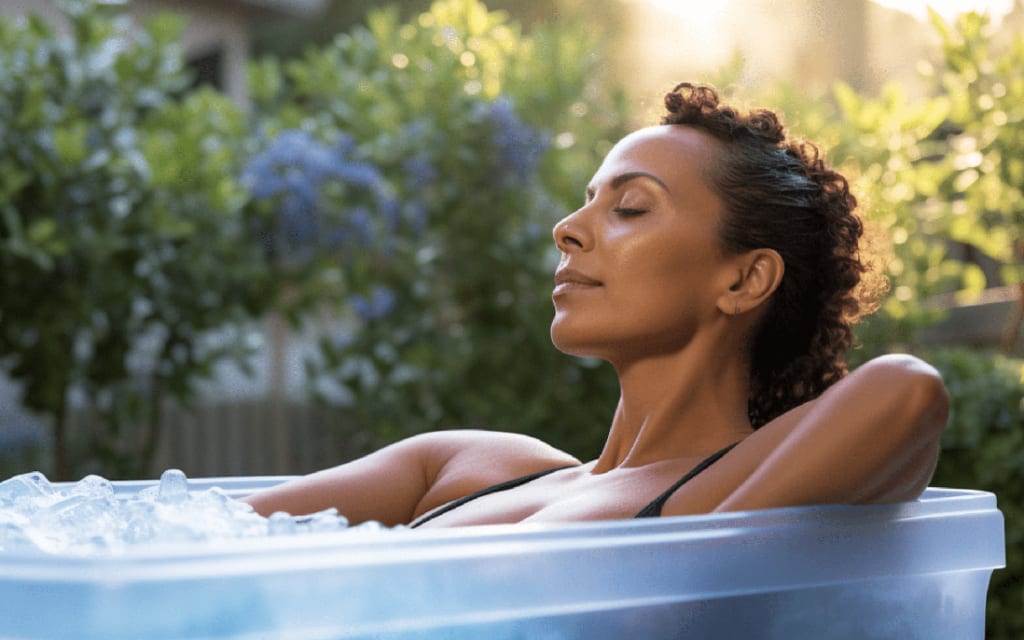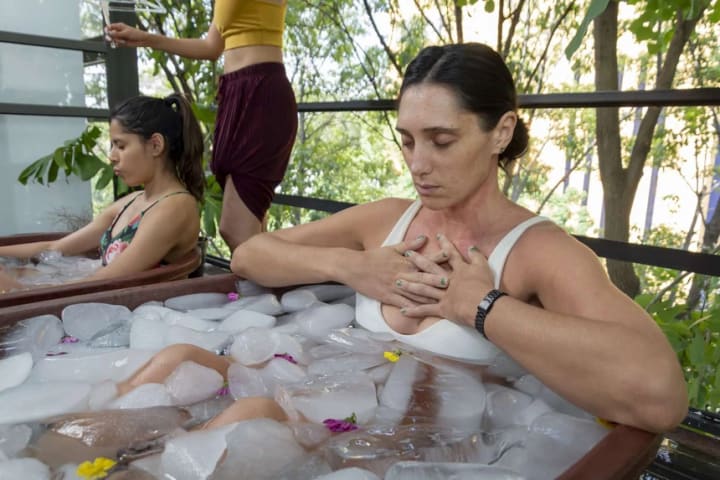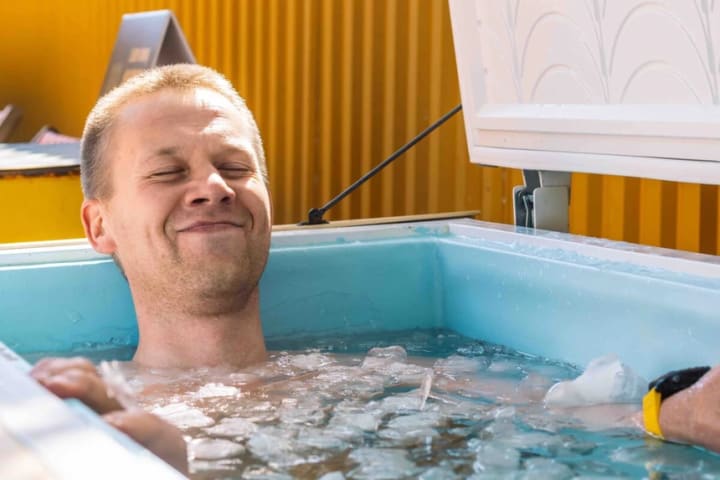The truth is that ice baths help restore muscles and lose weight
Cold showers may have several benefits, such as burning body fat, improving insulin resistance, and reducing stress, among others.

Although it is said to aid weight loss and have many other health benefits, not everyone can take ice baths. Improper bathing can cause hypothermia, nerve damage, frostbite, cold shock reaction...
1. Does ice bathing help you lose weight?
Soaking in cold water can be the right solution if you are looking to reduce body fat. Cold temperatures may aid weight and fat loss in a number of ways:
- Exposure to cold water appears to increase the amount of a hormone called "adiponectin" produced by fat tissue. Adiponectin is important in preventing insulin resistance, in which muscle, fat, and liver become less responsive to insulin.
- Increase energy consumption. When we are exposed to cold temperatures, the body has to work harder to maintain internal temperature. This leads to an increase in energy expenditure and calorie burning.
- Increased brown fat. Brown fat is a type of adipose tissue that is rich in mitochondria, which are responsible for burning calories and generating heat. Exposing our bodies to cold temperatures has been shown to increase brown fat. So the more brown fat we have, the more calories we burn.

2. Other benefits of bathing with ice water
Not only does it help with weight loss, ice baths also bring many other health benefits:
- Reduce muscle pain
Exposure to cold water constricts blood vessels and reduces blood flow – this helps reduce inflammation in the body. By regulating the inflammatory response, your body can recover better from exercise-related pain.
- Improve mood
Exposure to cold temperatures triggers the release of endorphins and adrenaline, which have been researched and shown to be effective in reducing stress.
- Enhance immune health
Anecdotal research shows that people who regularly swim in cold water are less likely to get colds, and there is evidence that it may increase levels of certain white blood cells and other infection-fighting substances.
However, cold showers do not reduce the number of sick days in adults without serious health conditions.
- Improve sleep
Cryotherapy has been shown to have a positive impact on sleep and circadian rhythms. Ice baths are a form of cryotherapy, so they can have a positive impact on sleep. The known mental health benefits of this practice may also contribute to supporting rest.
- Soothes the skin
Research shows that cold constricts small arteries and veins in the skin, which can help soothe inflamed, itchy skin.

3. Risks of ice baths
Although ice baths have many benefits, they still pose many potential health risks:
- Low body temperature (hypothermia)
- Nerve damage
- Frostbite on the skin
- Cold shock response, increases respiratory rate, heart rate and blood pressure
Serious risks may depend on your age, health, water temperature, and how long you shower. You may be at risk of complications if you:
- Poor circulation
- Have open wounds
- Diabetes
- Heart disease
- Neuropathy (nerve damage)
- Raynaud's syndrome (when your fingers and toes turn blue and/or white in the cold)
- Hives due to cold
If you have an underlying health condition, talk to a health professional about whether ice baths are safe.
Does ice bathing affect the heart?
Immersion in cold water increases blood pressure and increases stress on the heart. Studies have shown that this is safe for healthy people and the effects are temporary.
But it can be dangerous for people with heart disease, sometimes leading to life-threatening irregular heartbeat.

4. Instructions on how to safely take an ice bath
What items do you need for an ice bath?
- A tub or container
- A thermometer
- 1-3 bags of ice
- If you are using a freestanding tub without a faucet, you will also need a faucet.
- Ice bath clothes
- Stopwatch
- Towel
- Clothes after soaking
Steps for bathing with ice water
- Step 1: Fill the tub with cold water and add ice until the tub reaches the desired temperature
If you are making your own ice bath at home, it is best to add the ice slowly and monitor the temperature as you go. Most beginners start at 12-15 degrees Celsius and lower it from there.
- Step 2: Set the timer
You should bathe in ice water for 2-10 minutes. For those who are in good health and are used to it, you can bathe for 10-15 minutes. You can also benefit from an ice bath for just 2-3 minutes. If you are new to this process, just stay in the tub for 30 seconds. Then gradually increase the time.
- Step 3: Take a few minutes to breathe before bathing
You should spend some time practicing breathing before entering the ice bath to help your mind and body adapt more easily. Before entering the ice bath, take a deep breath, then exhale completely.
- Step 4: Step into the ice bath slowly
Entering the ice bath too quickly can cause shock and create a more unpleasant experience. Instead, step into the ice bath slowly.
When your body comes into contact with water, you may involuntarily feel yourself gasping. This gasping reflex is a natural response to cold weather and is one reason why breathing while taking an ice bath is so important.
Once you get into the tub, let the water reach up to your shoulders or neck, but if you're just starting out, you can leave it partially submerged. If you're soaking in the water but it feels too cold, slowly lifting your chest out of the water can help.
- Step 5: Soak and focus on breathing
Focus on what you can control – your breathing. Slow exhalations can help steady your heart rate, and deep, steady breathing can help improve circulation.
What to do after ice bath?
- Step out of the bathtub slowly : You should step out slowly and use a towel to pat yourself dry completely, then change into dry clothes.
- Gentle exercise : After taking an ice bath, you can exercise gently by walking, stretching, doing yoga...
- Consider snacking : Ice baths can help boost your energy levels in the long run, but you may feel tired at first because you're not used to it. So if you feel tired and hungry, you can have a snack.
About the Creator
HK Decor
Telling stories my heart needs to tell <3 life is a journey, not a competition
If you like what you read, feel free to leave a tip,I would love some feedback
https://sites.google.com/view/hk-decor/trang-ch%E1%BB%A7
Enjoyed the story? Support the Creator.
Subscribe for free to receive all their stories in your feed. You could also pledge your support or give them a one-off tip, letting them know you appreciate their work.






Comments
There are no comments for this story
Be the first to respond and start the conversation.